The bonsai on display at the 2016 Pacific Northwest Bonsai Clubs Association exhibit were shown on stands and with accent plants. Each was healthy and well-prepared for exhibit.
The black pine below reveals good technique in the arrangement of branches into pads. The visual weight of the foliage is bordering on heavy given the thin trunk. That said, the length and placement of the branches is well suited to the movement of the trunk.
Black pine
A larger black pine was in an earlier stage of development. In time the silhouette will be refined to improve the overall balance.
Black pine
It’s not often one sees a trident maple like the specimen below. It’s a great example of working with what you have. The trunk is long and relatively straight – the branches are roughly similar in size.
Trident maple
The satsuki azalea below is in good shape. Both pot and stand are a good match for the tree. The accent appears to be a bit heavy for the tree, but this could be due to the perspective of the photo.
Satsuki azalea
Shohin displays are often the most complex displays at exhibits. Ideally, deciduous and evergreen trees alternate on each tier. Given the strong direction of the juniper at the lower right, it’s a natural selection for the corner spot. The ginkgo and pine could theoretically swap spots, but the convention of showing pines on the highest shelf is strong enough to merit keeping the display as is.
Shohin display
The Japanese maple grove below has a good silhouette. The moss appears high on the left side, something that may be addressed in the next repotting.
Japanese maple grove
A three-point display featured a juniper and a maple. The main tree – the juniper – is larger than the second tree which provides good balance between the two. One is a conifer and one is deciduous – a good contrast for such a display. A single leaf on the maple denotes the season.
Procumbens juniper and maple
The ponderosa pine below has great bark that conveys the tree’s age. I expect the branch density to improve dramatically in the coming years.
Ponderosa pine
The suiseki tables featured many stones displayed at different levels.
Suiseki display
Buffalo stone
The yew below has a great trunk with multiple lifelines and deadwood along the trunk.
Yew
The pine below has branches on the upper part of the trunk, but not on the lower part. This makes for a somewhat bunjin feeling, however the trunk is fairly heavy for this style. Were the trunk thinner, I might suggest a round container, but given the size of the trunk and weight of the foliage, the oval shape is a good one for the pot. A slightly smaller pot in this shape could be a good fit.
Pine
The zelkova below presents a winter scene as it’s lost its leaves. The branch density is good – I expect it to get even better in time as the tree is well cared for.
Zelkova
This weekend: GSBF Convention 39 in Sacramento, California
The GSBF Convention is going on now. Come to Sacramento to see headliners Ryan Neil and Bjorn Bjorholm, multiple exhibits and the largest vendor area in Northern California.
The event runs through Sunday. I’ll be teaching a workshop on exposed root black pines Saturday afternoon and in the vendor area with a selection of tools, pots, supplies and trees. Learn more about the GSBF Convention 39 here.
Subscribe to Bonsai Tonight
New Posts Delivered Every Tuesday and Friday
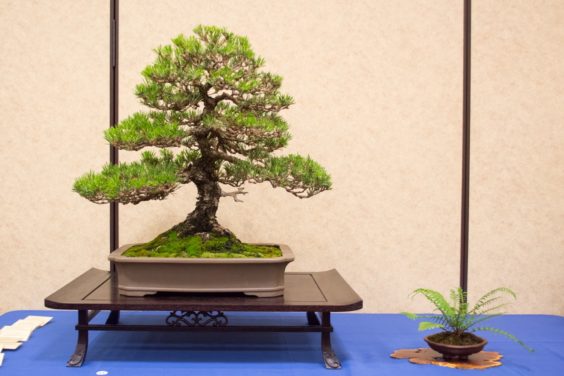
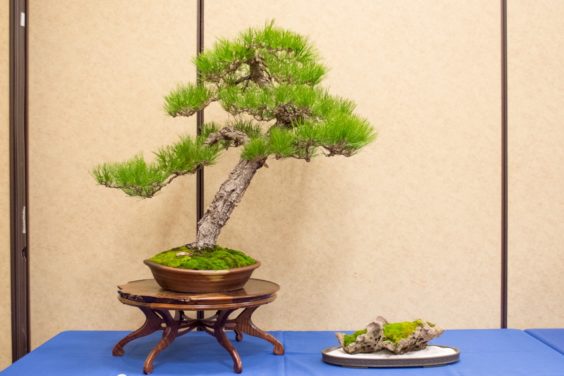
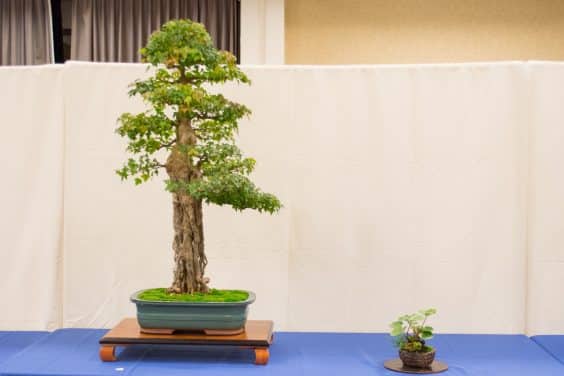
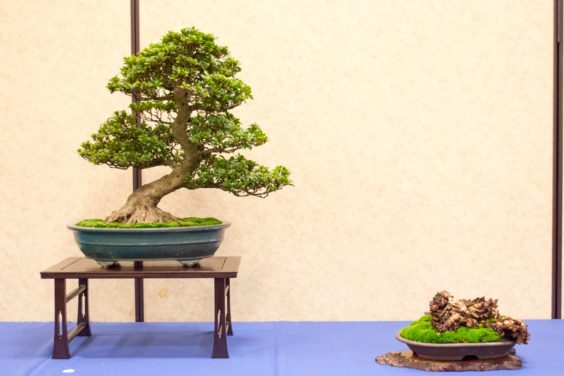
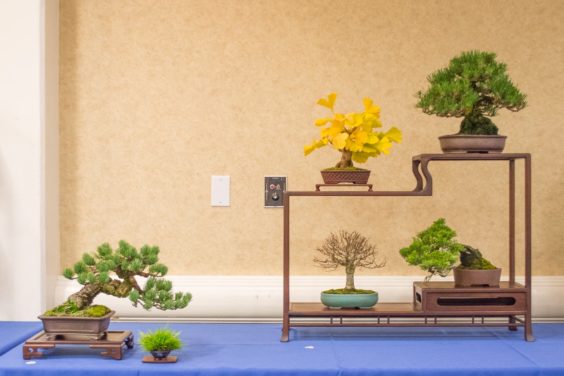
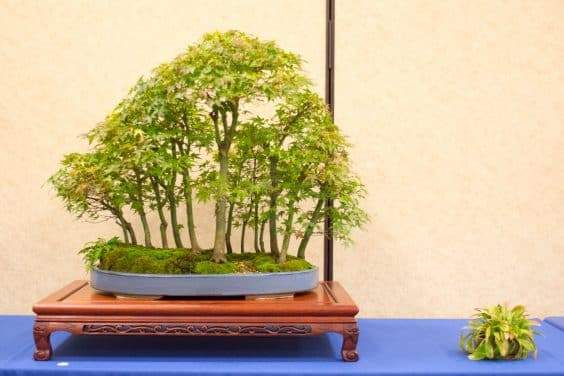
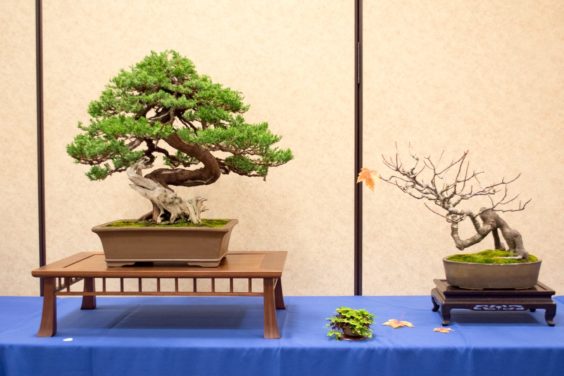
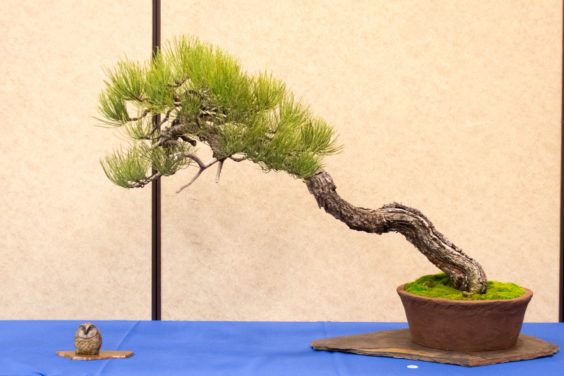
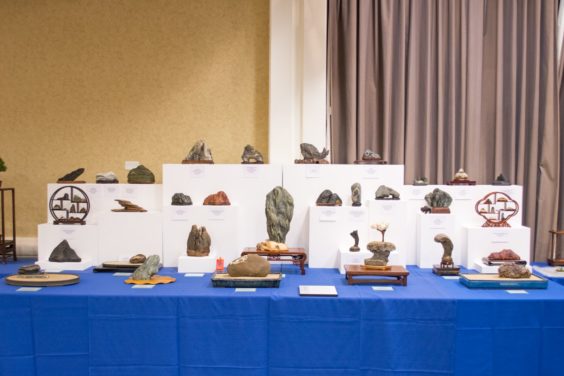
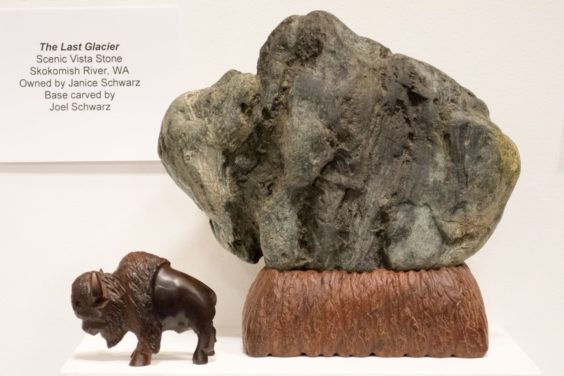
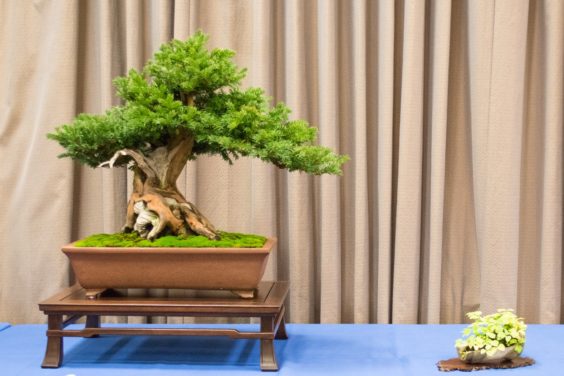
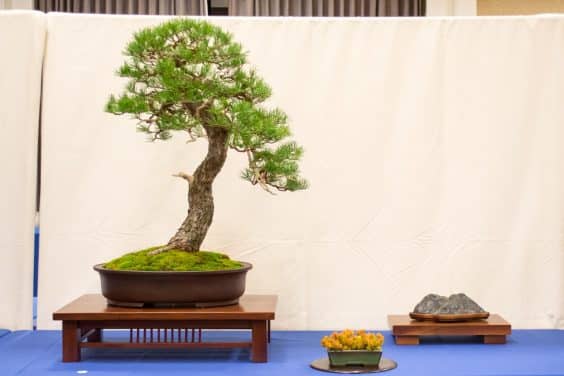
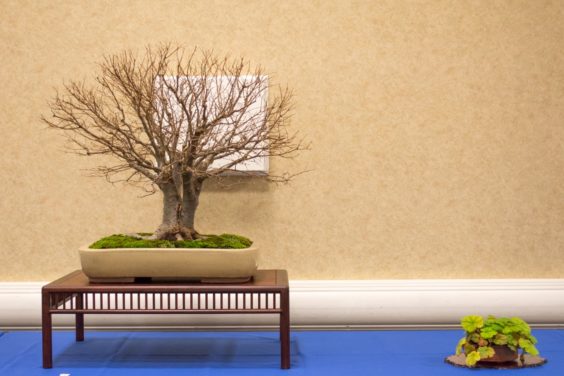
steve says
the white square behind the zelkova is interesting…